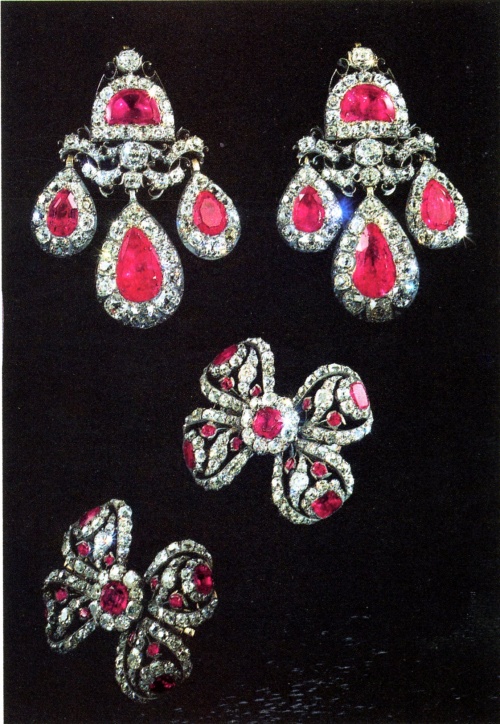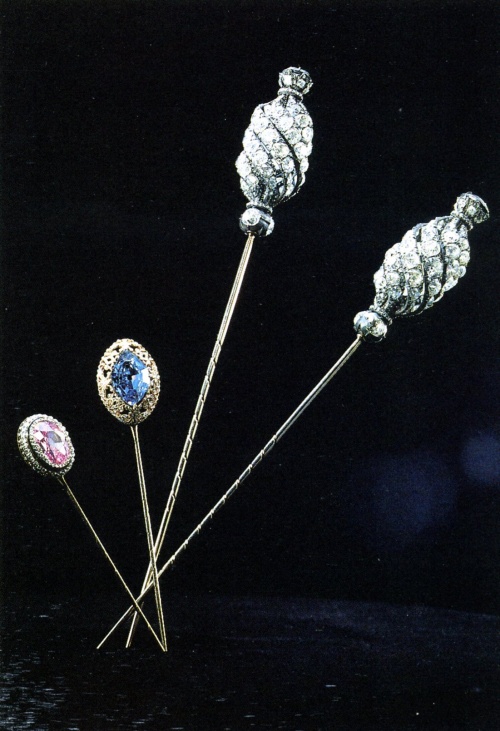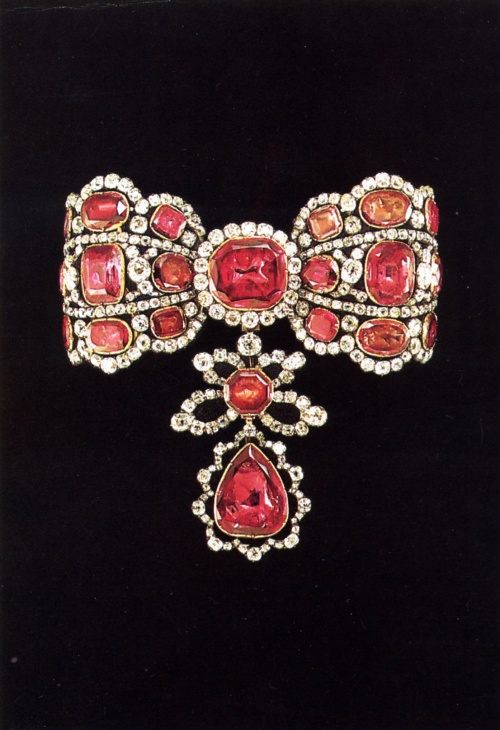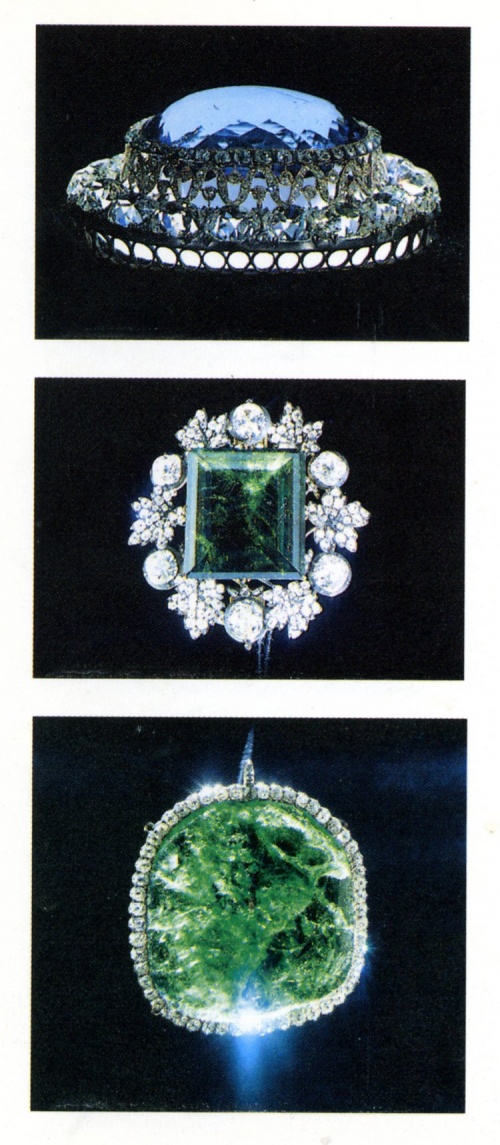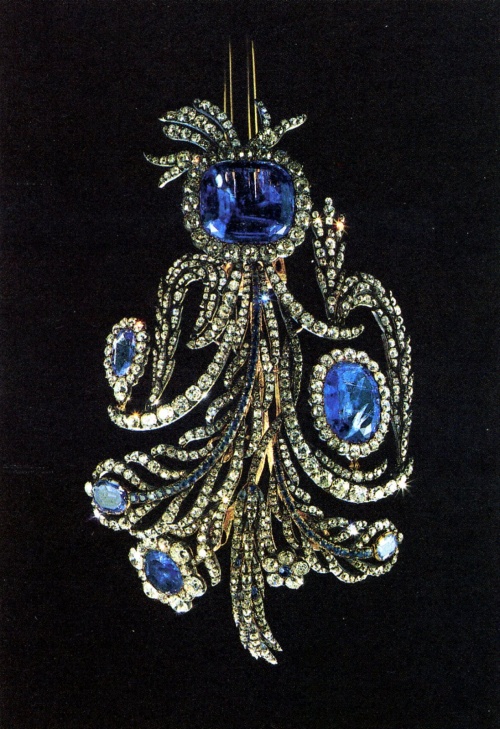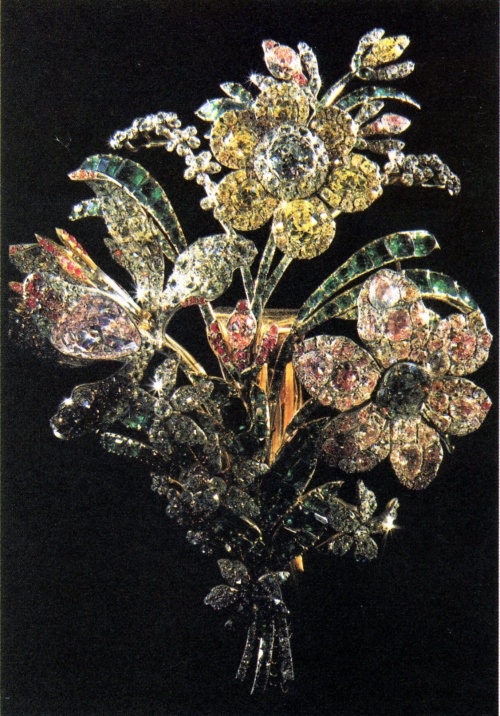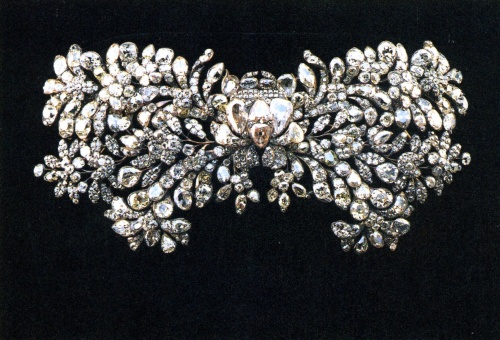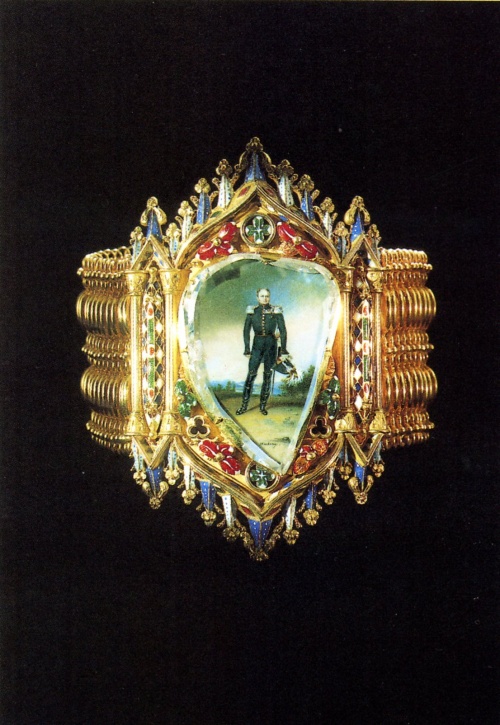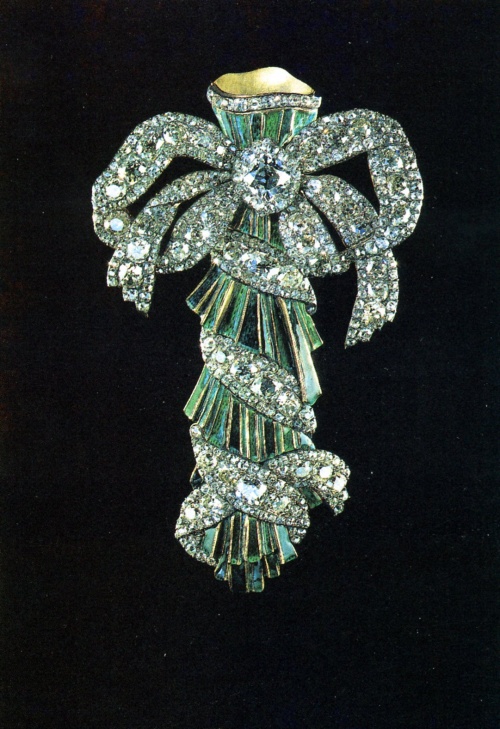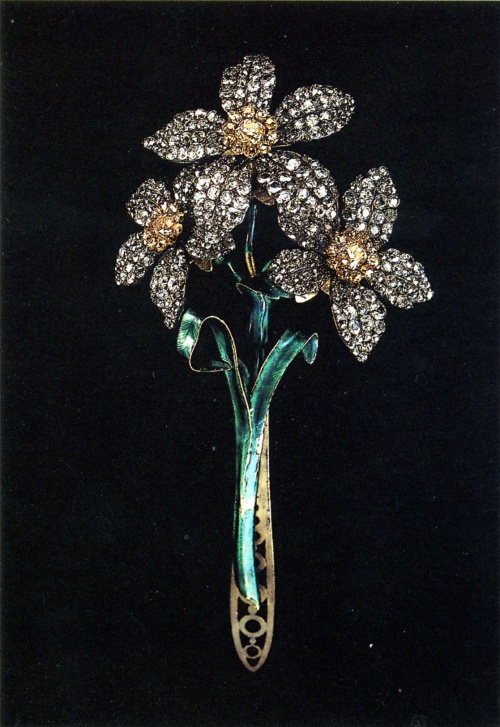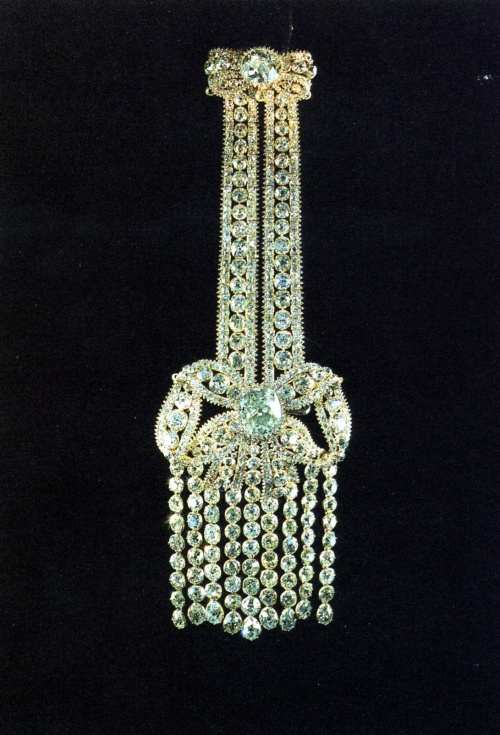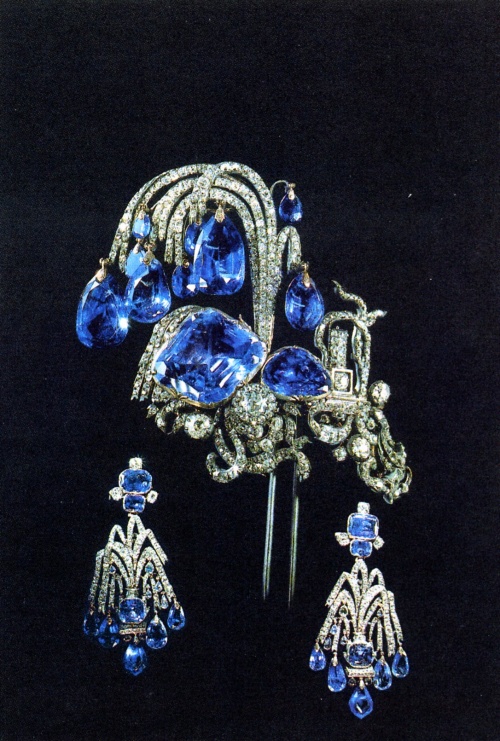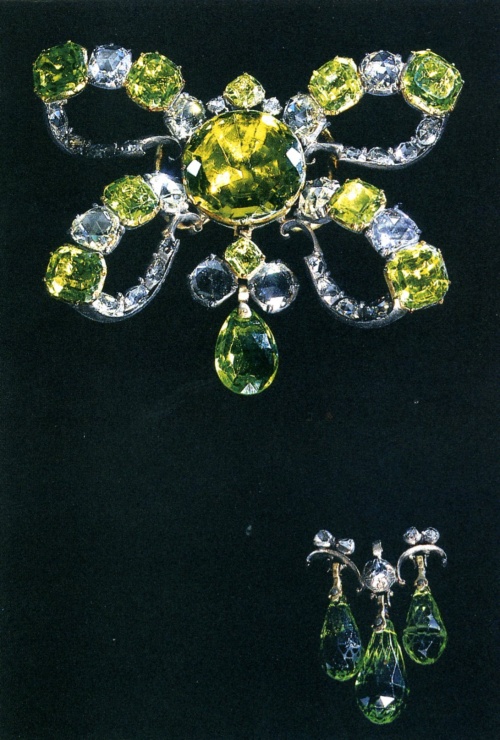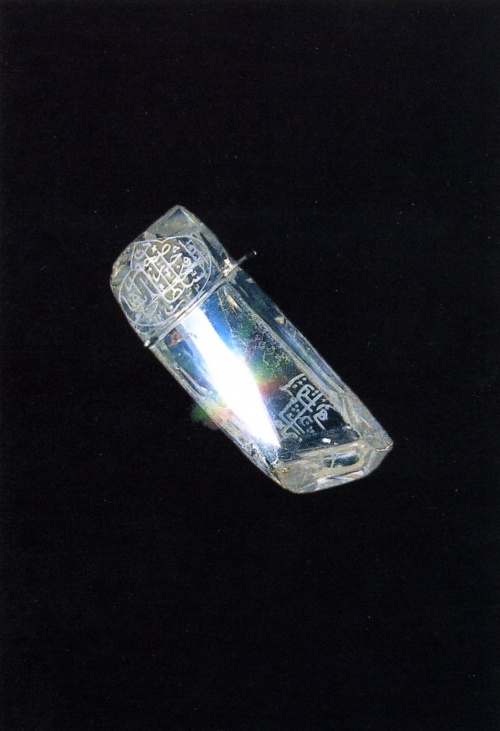“DIAMOND FUND” (19 photos)
Разрешение картинок от 750x1718px до 1246x1729px
Diamond Shah. 88.70 carats.
Length at extreme points 4.0 cm.
Historical stone of Indian origin. In 1829, the diamond was brought to Nicholas I “to atone” for the murder of Russian representative A. S. Griboedov in Tehran. To avoid diplomatic difficulties, the heir to the Persian throne brought rich gifts to St. Petersburg, including the famous diamond with skillful engraving on three sides - the greatest treasure of the Persian shahs. The fine lines of Arabic script tell the story of the former owners of the stone and the dates of ownership. Thus, the first inscription appeared in India in 1591, when the ruler of the Seringan province owned the stone, the second was made in 1641, when the diamond became the property of the Mughal dynasty, and the third was engraved in 1824, after the stone was captured by the Qajar dynasty and transported to Persia.
Large bouquet.
Gold, silver, diamonds, emeralds. 16.0X21.0 cm. Around 1760.
The details of the bouquet are movably fastened. Multi-colored foil is placed under the diamonds. The central petal of the iris is a unique lilac diamond. Similar bouquets were used to decorate the bodices, sleeves and skirts of the magnificent ceremonial dresses of noble ladies.
Bracelet.
Gold, portrait diamond (about 25 carats), diamonds, enamel. Diamond: 4.0x2.9 cm. Second quarter of the 19th century.
Under the diamond is a miniature on ivory depicting Alexander I. The miniature is made from a portrait of the famous English painter D. Dow, who worked in St. Petersburg for several years.
Portbouquet.
Gold, silver, diamonds, enamel.
13.5X8.0 cm.
Around 1750
Pinned to the bodice of a formal dress as a vase for
fresh flowers.
Egret.
Gold, silver, diamonds, sapphires. 1О,ОХ 17.0 cm. Around 1800.
The individual parts of the aigrette are movably fastened. The sparkle of diamonds especially emphasizes the deep blue of large sapphires.
